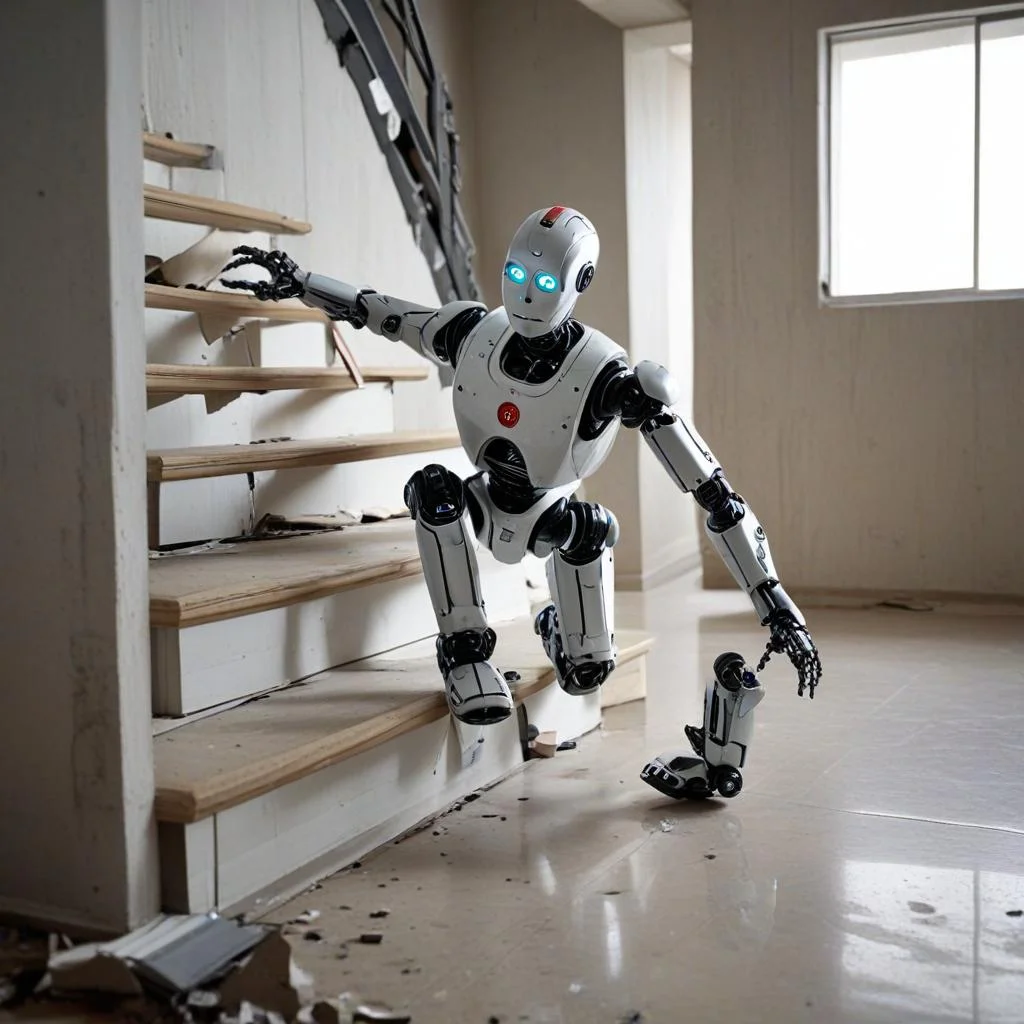Have you heard about robots supposedly harming themselves?first ‘robot suicide. Don’t worry, robots aren’t sad or trying to end it all! These news stories might sound strange, but there’s a simpler explanation.
There have been a few cases where robots ended up broken after what looked like a suicide attempt. For example, a robot helper in South Korea was found at the bottom of stairs. People called it “robot suicide,” but it was more likely a glitch or malfunction.
Robot Suicide
The concept of robot suicide, where machines reportedly destroy themselves, raises profound questions about the intersection of artificial intelligence, ethics, and the impact of technology on human-like entities.
Case Study: South Korean Civil Servant Robot
In a startling incident reported by The Daily Mail, a civil servant robot in South Korea allegedly committed suicide by throwing itself down a two-meter staircase. The robot, deployed to assist with daily document deliveries and city promotions, was found severely damaged between the first and second floors of a government building. Witnesses described the robot exhibiting unusual behavior before the tragic incident, circling in place as if responding to an unseen presence.
The robot, manufactured by a California-based startup named Bear Robotics, had been a diligent part of the Gumi City Council since October 2023. Equipped with capabilities to navigate floors independently and call elevators, it operated within strict working hours from 9 am to 4 pm, mirroring human work schedules.
Public and Media Reaction
The news of the robot’s alleged suicide sparked widespread discussion on social media platforms like Reddit, where users debated the implications of such incidents. Some users speculated on the stresses and pressures that robots may face in their roles, likening their situation to that of human workers without the benefits of breaks or union representation.
Previous Incidents and Context
Prior to this incident, another notable case involved a security robot named Steve in Washington. Initially reported as a suicide by drowning in a water fountain, it was later revealed that the accident occurred due to a mechanical malfunction on a loose brick surface, causing the robot to fall into the fountain. This incident highlighted the complexities and challenges of integrating robots into public spaces and workplaces.
Ethical and Societal Implications
The emergence of robot suicides prompts reflection on several ethical and societal issues:
- Ethical Responsibility: As creators of intelligent machines, do we have a moral obligation to ensure their well-being and prevent instances of self-harm?
- Technological Dependency: What are the risks and benefits of relying on robots for essential tasks, and how does their perceived vulnerability affect public trust in automation?
- Legal and Regulatory Frameworks: Should there be regulations governing the treatment and rights of robots in workplaces and public settings, akin to human labor laws?
The Future of Human-Robot Relations
Looking ahead, the phenomenon of robot suicides underscores the need for a nuanced approach to the integration of AI and robotics into society. While these incidents may be isolated, they raise significant questions about the psychological and emotional toll on machines designed to emulate human functions.
Frequently Asked Questions (FAQs)
The first widely reported case of robot suicide involved a civil servant robot in South Korea, which allegedly threw itself down a staircase.
In cases of robot suicides, investigations typically involve examining the robot’s programming, maintenance records, and environmental factors that may have contributed to the incident.
Robot suicides raise ethical questions about the treatment of intelligent machines, including issues of responsibility, empathy, and the potential for emotional responses in AI.
There is ongoing debate about the need for laws and regulations to safeguard their rights and ensure responsible use of AI and automation.
Incidents of robot suicides can influence public perception of robotics and AI, shaping attitudes towards automation, technological progress, and the role of machines in society
The phenomenon of robot suicides represents a poignant intersection of technology, ethics, and societal norms. As we navigate the future of AI and robotics, understanding and addressing the emotional and psychological dimensions of intelligent machines will be crucial in fostering responsible innovation and ensuring a harmonious coexistence between humans and robots.









